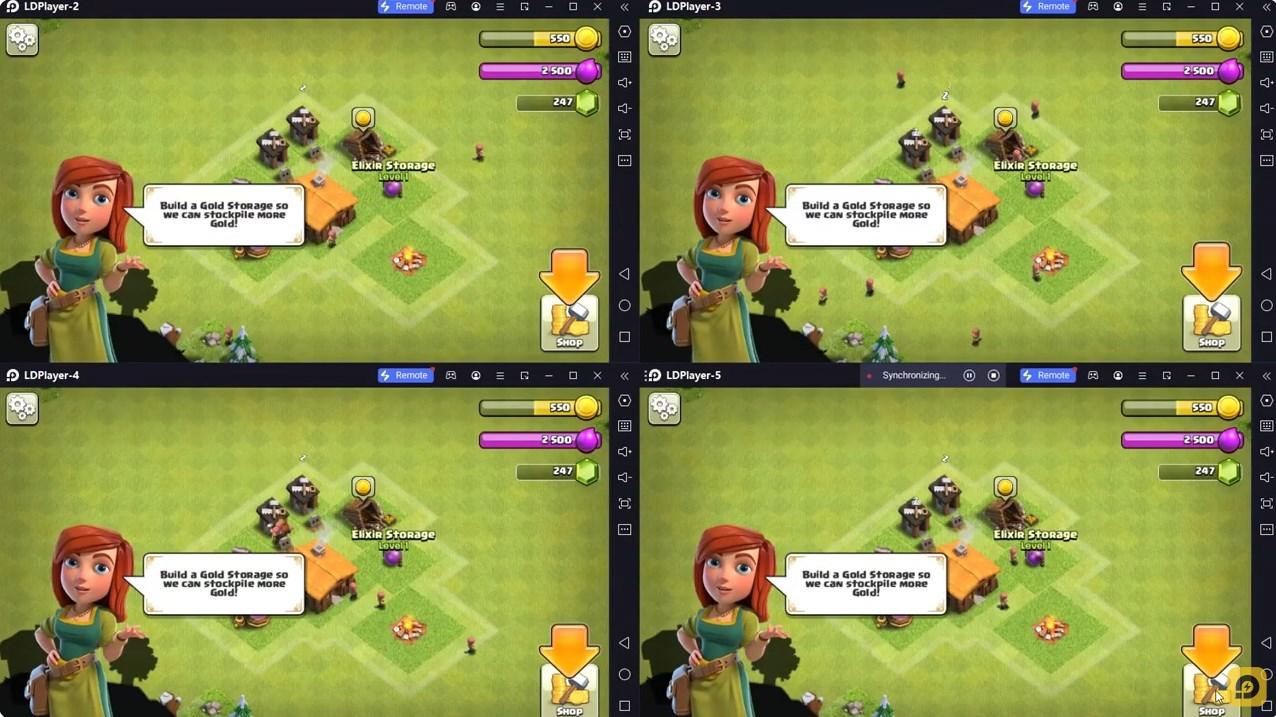Hashi Together-Bridges Puzzle
Use LDPlayer to Play Hashi Together-Bridges Puzzle on PC
Hashi Together-Bridges Puzzle is a Puzzle game developed by Puzzles Together, and with the best Android emulator, LDPlayer, you can now enjoy Hashi Together-Bridges Puzzle on your computer.
Playing Hashi Together-Bridges Puzzle on PC allows you to harness the full power of your computer's CPU and memory resources, without worrying about lag or crashes. You're no longer constrained by battery life, mobile data, or interruptions—play for as long as you want.
LDPlayer, one of the Android emulators for Windows PC, is designed specifically for mobile gamers. Based on Android 9.0, it enhances your gaming experience on PC by providing faster performance and higher FPS.
Moreover, LDPlayer offers unique emulator features including multi-instance support, macros, synchronization, and other features not available on mobile devices. Start downloading and playing Hashi Together-Bridges Puzzle on your computer now!
Hashi is a logic puzzle game, also known as Bridges/Chopsticks, which you try to connect islands with bridges. All the puzzles are embbed in the game, so you can play offline.The goal is to connect all of the islands by drawing a series of bridges between the islands.
Features:
* Monthly updated puzzles
* Multiple sizes, from 6x9 to 14x21
* More puzzles, 600 puzzles each size
* Connectable Island hint
* Highlights connected islands
* Undo / Redo
* Automatically saved
* Backup / Restore
* Night mode
* Compete with players from all over the world
* Mutiple languages support
* Timer
* Unlimited check
Rules:
Hashi is played on a rectangular grid with no standard size, although the grid itself is not usually drawn. Some cells start out with (usually encircled) numbers from 1 to 8 inclusive; these are the "islands". The rest of the cells are empty.
* The goal is to connect all of the islands by drawing a series of bridges between the islands.
* They must begin and end at distinct islands, travelling a straight line in between.
* They must not cross any other bridges or islands.
* They may only run orthogonally (i.e. they may not run diagonally).
* At most two bridges connect a pair of islands.
* The number of bridges connected to each island must match the number on that island.
* The bridges must connect the islands into a single connected group.
Solution methods:
Solving a Hashiwokakero puzzle is a matter of procedural force: having determined where a bridge must be placed, placing it there can eliminate other possible places for bridges, forcing the placement of another bridge, and so on.
An island showing '3' in a corner, '5' along the outside edge, or '7' anywhere must have at least one bridge radiating from it in each valid direction, for if one direction did not have a bridge, even if all other directions sported two bridges, not enough will have been placed. Obviously, a '4' in a corner, '6' along the border, or '8' anywhere must have two bridges in each direction. This can be generalized as added bridges obstruct routes: a '3' that can only be travelled from vertically must have at least one bridge each for up and down, for example.
It is common practice to cross off or fill in islands whose bridge quota has been reached. In addition to reducing mistakes, this can also help locate potential "short circuits": keeping in mind that all islands must be connected by one network of bridges, a bridge that would create a closed network that no further bridges could be added to can only be permitted if it immediately yields the solution to the complete puzzle. The simplest example of this is two islands showing '1' aligned with each other; unless they are the only two islands in the puzzle, they cannot be connected by a bridge, as that would complete a network that cannot be added to, and would therefore force those two islands to be unreachable by any others.
Any bridge that would completely isolate a group of islands from another group would not be permitted, as one would then have two groups of islands that could not connect. This deduction, however, is not very commonly seen in Hashiwokakero puzzles.
Screenshots and Videos of Hashi Together-Bridges Puzzle PC
Why Play Hashi Together-Bridges Puzzle on PC with LDPlayer?

How to Download Hashi Together-Bridges Puzzle on PC?
Download and install LDPlayer on your computer
Locate the Play Store in LDPlayer's system apps, launch it, and sign in to your Google account
Enter "Hashi Together-Bridges Puzzle" into the search bar and search for it
Choose and install Hashi Together-Bridges Puzzle from the search results
Once the download and installation are complete, return to the LDPlayer home screen
Click on the game icon on the LDPlayer home screen to start enjoying the exciting game
If you've already downloaded the APK file from another source, simply open LDPlayer and drag the APK file directly into the emulator.
If you've downloaded an XAPK file from another source, please refer to the tutorial for installation instructions.
If you've obtained both an APK file and OBB data from another source, please refer to the tutorial for installation instructions.
